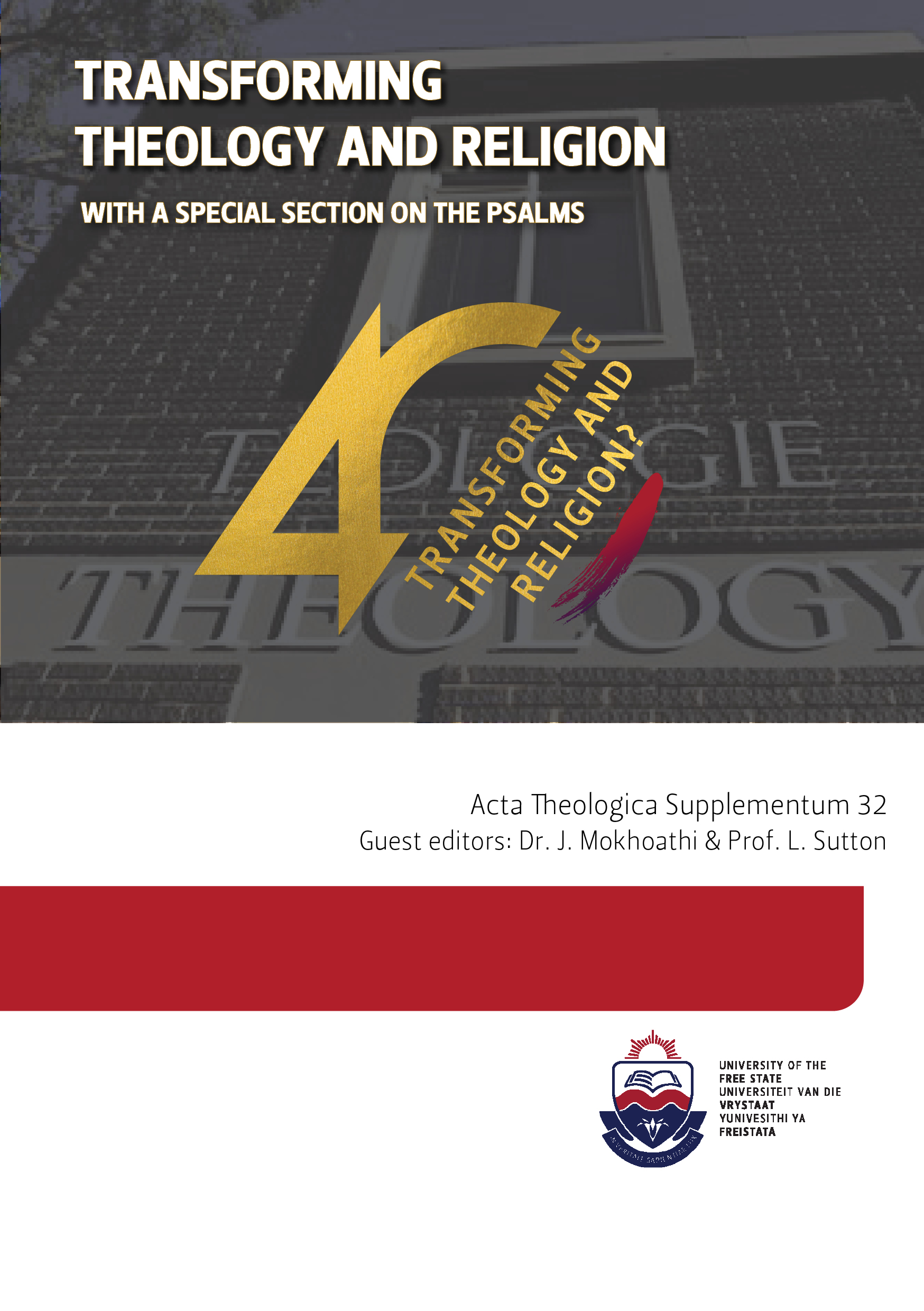A transforming body: A post-exilic reading of Psalms 50 and 51 in the light of social norms communicated through the Leviticus sacrificial system and body imagery
DOI:
https://doi.org/10.38140/at.vi.5852Keywords:
Psalms 50 and 51, Social norms, Leviticus sacrificial system, Body imageryAbstract
Although Psalms 50 and 51 do not share the same superscription (a Psalm of Asaph and a Psalm of David), they do share multiple images relating to the body and the cult. Situated between a collection of Korahite (42-49) and Davidic psalms (51-70[51-72]) in Book II of the Psalter (42- 72), Psalm 50 is considered to be part of the liturgy with a prophetic character. The psalm, with its strong focus on offering, brings about the renewal of Israel before God. Psalm 50 focuses on the community, while in Psalm 51,
the focus is on the individual. In Psalm 51, body imagery becomes an essential part of describing the acts of purification, penitence and offering. Reading these Psalms in the light of social norms communicated through the Leviticus sacrificial system and body imagery, the body’s renewal process (community and individual) before God becomes apparent.
Downloads
##submission.downloads##
Published
How to Cite
Issue
Section
License
Copyright (c) 2021 Author

This work is licensed under a Creative Commons Attribution 4.0 International License.








